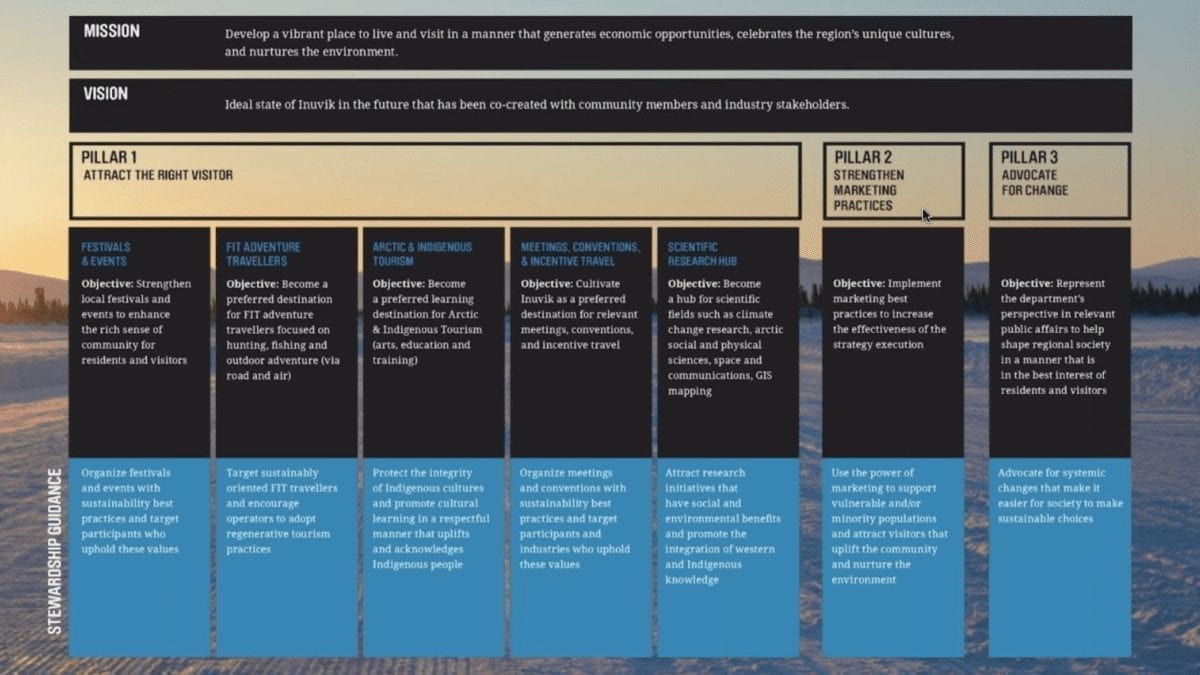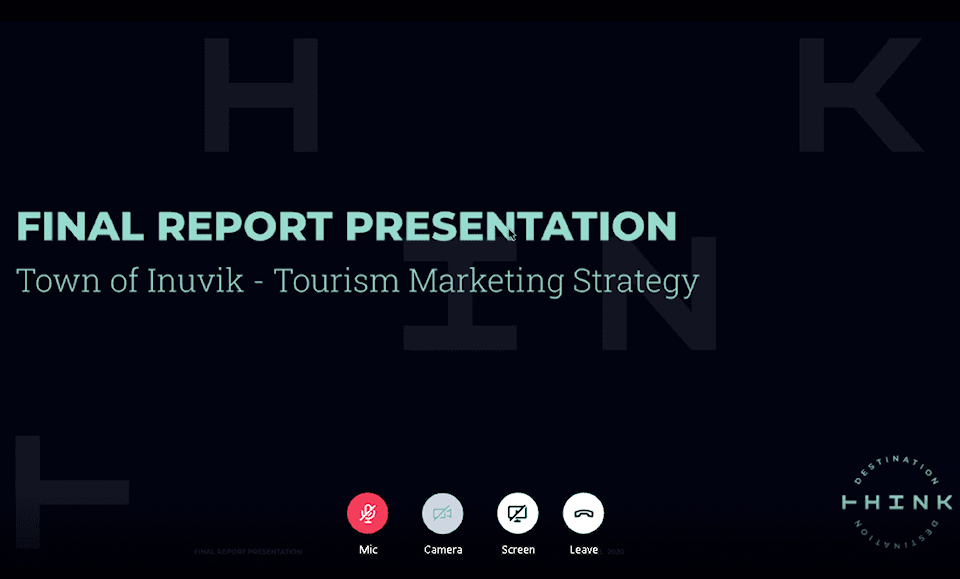Travel may not be the first thing on people's minds right now, but residents of Inuvik are mulling over a series of recommendations for its future tourism marketing strategy laid out in a report released April 28 that include renovating the Midnight Sun Complex and charging a $100 environmental fee to incoming tourists.
Included with the report is an analysis of the methodology undertaken by Vancouver-based consultant firm Destination Think in preparing it as well as projections on how COVID-19 could potentially affect tourism.

"Even though it wasn't the core focus, we have to stay flexible and acknowledge the situation that we're in," said lead strategist Tyler Robinson. "In a crisis like this, there's a range of potential future outcomes and scenario analysis becomes more important than ever.
"Because we can't be confident in one particular outcome, it can be helpful to plan for outcomes where we see the most probability."
A wide variety of potential scenarios are being floated as possible, so Robinson instead focused on impacts of the crisis, particularly widespread cancellations of events, which cascades into businesses closing and unemployment, but also the potential cancellation of air traffic routes that may never be resumed.
With those lost business opportunities go funding opportunities as well. These uncertainties of how long the epidemic will last as well as how people, and governments, will react are creating a lot of headaches for the tourism industry.
One thing for certain is that planners should expect to be on some level of lock down for some time, either from a local level to a national level. The level of restriction could loosen and tighten depending on how events play out.
Aside from the sober look at the situation, the report also highlights recommendations based on the work completed over the last year. None of the recommendations of the report have been approved by town council. The report is being released to start a discussion on how the community approaches tourism.
Three big ideas floated by the report are renovating the Midnight Sun Complex to allow for more capacity and a potential environmental fee to cover the footprint of travellers, following examples of the Galapagos Islands, which charges tourists $100 to land on the island, and completing a greenhouse gas baseline assessment since climate footprint is increasingly a factor in tourism decisions.
"Tourism is contributing to climate stress factors," noted Robinson. "In terms of greenhouse gases, it contributes about eight per cent of the total. This is manifesting in a number of ways in visitor markets — it can increase prices, it can cause really high costs rebuilding after a climate related natural disaster, along with reputation damage and loss of social license.
"But tourism can be a huge part of the solution. It can be used as a mechanism to push back against climate change. One way this has been successful around the world is by implementing regenerative tourism practices."
Noting residents had expressed a desire for "high value travellers" — tourists who tend to get more involved with the places they visit, either staying longer, aligning closer to environmental and cultural values and of course spending more money. Other terms for the style of travel are "slow travel" or "niche vacations."
A deep dive into the tourism numbers found that while Aurora viewing remains the biggest draw in tourism, hunting drew huge volumes of money per tourist, on average $13,962 per visitor. Other big revenue earners that have potential to grow are fishing and outdoor adventuring.
Building on this, the report identifies five areas to focus on in tourism — expanding on festivals, bringing more adventure tourists in, developing more aboriginal and indigenous tourism programs, hosting more conventions and gatherings and drawing more scientific researchers to the region. Each area has a stewardship principle built in to guide sustainable development.
Over the past year, researchers engaged with locals on their take of tourism in the region. In total 28 online surveys were completed, three in-person interviews, three phone interviews, four written response interviews were completed in addition to public sessions that 34 residents attended.
View the entire report here.
